Night shift
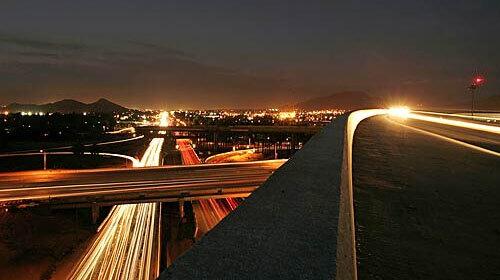
Every region has its horrible freeway interchange. In the San Fernando Valley, the intersection of the San Diego and Ventura freeways is infamous. Orange County has the Orange Crush the convergence of the Santa Ana, Garden Grove and Orange freeways. In the Inland Empire, shown here, the chokepoint is the intersection of the 60, 91 and 215 freeways near downtown Riverside. One California Highway Patrol officer called the interchange a suicide drive. (Irfan Khan / Los Angeles Times)
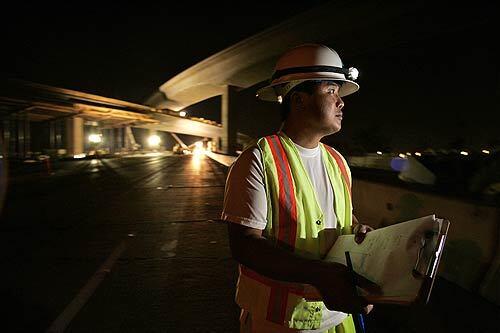
Relief is on the way for the 320,000 motorists who pass through the Riverside intersection every day. A three-year, $317-million reconstruction project to upgrade the interchange and widen five miles of freeway around it will wrap up in six months. Caltrans officials plan to open two new connector ramps by years end. Caltrans inspector Nick Truong, at left, at work on the interchange. (Irfan Khan / Los Angeles Times)
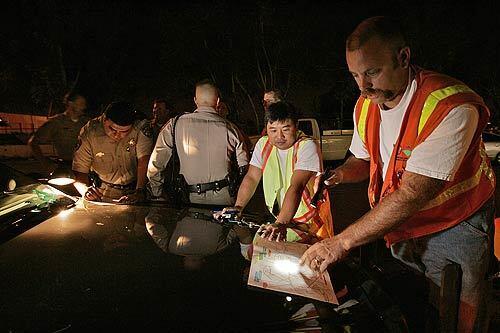
Nick Truong, left, a Caltrans inspector, and Robert Corp, night superintendent for the contractors upgrading the interchange, look over planned freeway closures for a recent night of construction. Routing nighttime travelers onto detours is Truongs job. He has worked the 9 p.m. to 5 a.m. shift for the last two years, telling California Highway Patrol officers when to close a freeway and making sure lane closure signs dont say left instead of right. (Irfan Khan / Los Angeles Times)
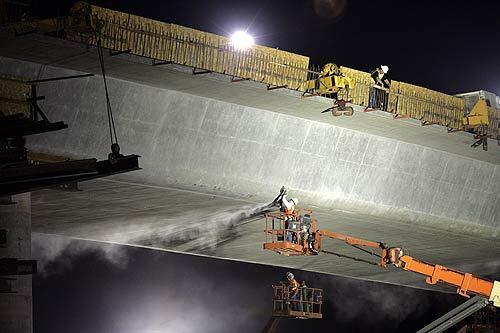
Crews work on a connector ramp at the intersection. Before Caltrans started in 2004, the interchange looked as it did when it was built in the late 1950s, when the population of Riverside and San Bernardino counties was about 750,000. Today, more than 4 million people live in the Inland Empire, with planners expecting 8.4 million residents by 2050. The number of motorists using the interchange has doubled in the last five years. (Irfan Khan / Los Angeles Times)
Advertisement
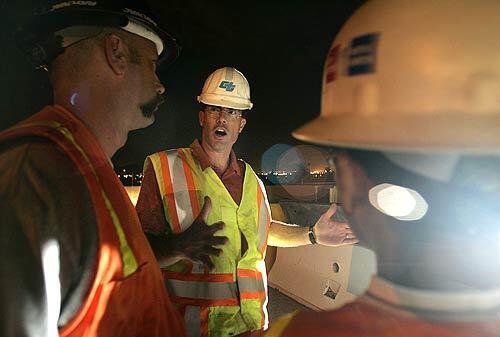
Mike Bergevin, center, one of three Caltrans engineers overseeing the project, talks to contractors. The reconstruction effort is about six times as big as any other built in the region. In 2003, when the project was put out to bid, it was Southern Californias most expensive freeway undertaking. When the work is finished, Caltrans will have built 11 bridges, 84 walls and raised a half-mile section of the 91 Freeway by 30 feet, among other improvements. Planners think the interchange will handle traffic projections through the next 20 years. (Irfan Khan / Los Angeles Times)
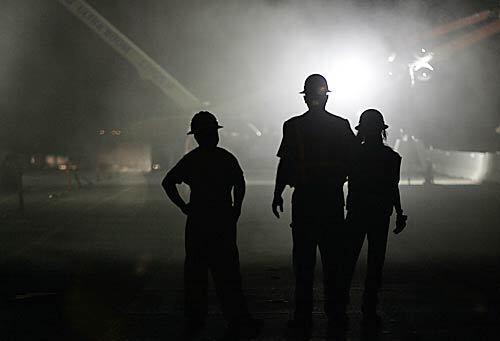
For the construction crew, things run pretty smoothly until about 1 or 2 a.m. Thats when you see the crazy stuff, said Caltrans inspector Nick Truong. Teenagers steal detour signs. Pedestrians dash across the freeway on foot. Motorists use closure cones as a driving course. Drunken drivers plow straight into construction zones while workers frantically dart out of the way. Miraculously, no workers have been hurt. (Irfan Khan / Los Angeles Times)
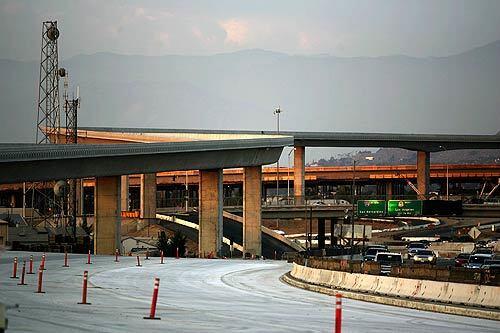
Caltrans engineers say the revamped interchange, scheduled to be completed in early 2008, should ease traffic for a while. But whether the intersection ever shakes its infamous reputation remains to be seen. (Irfan Khan / Los Angeles Times)







